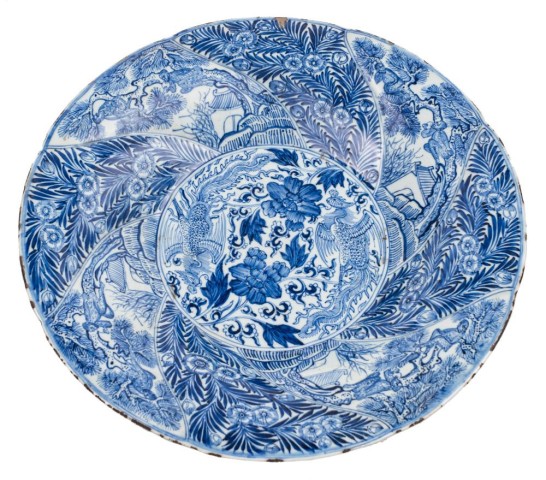BG82
Modelled after a silver form with deep spiral moulded sides, expressively decorated in shades of underglaze blue, the central roundel painted with an exuberant design of two phoenix and peony blooms, the feathers and petals finely delineated, the swirled lobed rim with sweeping panels decorated with monkeys clambering on pine trees eating peaches alternating with flowering stems, the reverse with panels of lotus and peony sprays, the base with an artemisia leaf mark within a double circle.
Literature
The image of monkeys swinging in a pine tree, as depicted in this dish, symbolises a wish for promotion to pass through generation to generation. The monkeys are shown eating peaches, which are a traditional symbol of longevity. They are associated with Doaism and immortality.
In the classical novel Fengshen yanyi (Metamorphoses of the Gods), the peach tree was stolen from the garden paradise of the Kunlun where Xi Wang Mu, the Queen Mother of the West, resides.
The Daoist god of longevity, Shou Lao, is often depicted holding a peach. It is said that the peaches of the magical P'an-t'ao tree of the gods, which blossom once every three thousand years and ripen only after another three thousand years, will confer immortality on those who eat them (see Williams 1976 'Outlines of Chinese Symbolism and Art Motives', pp.209, 226, 315).

